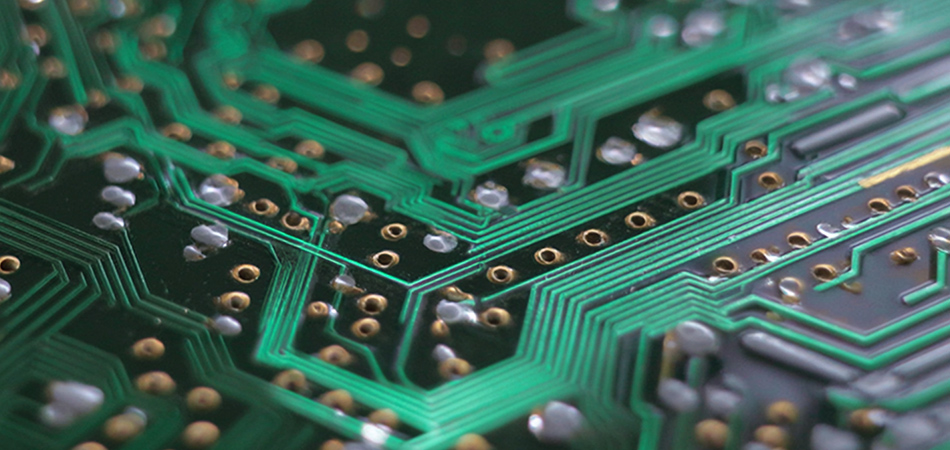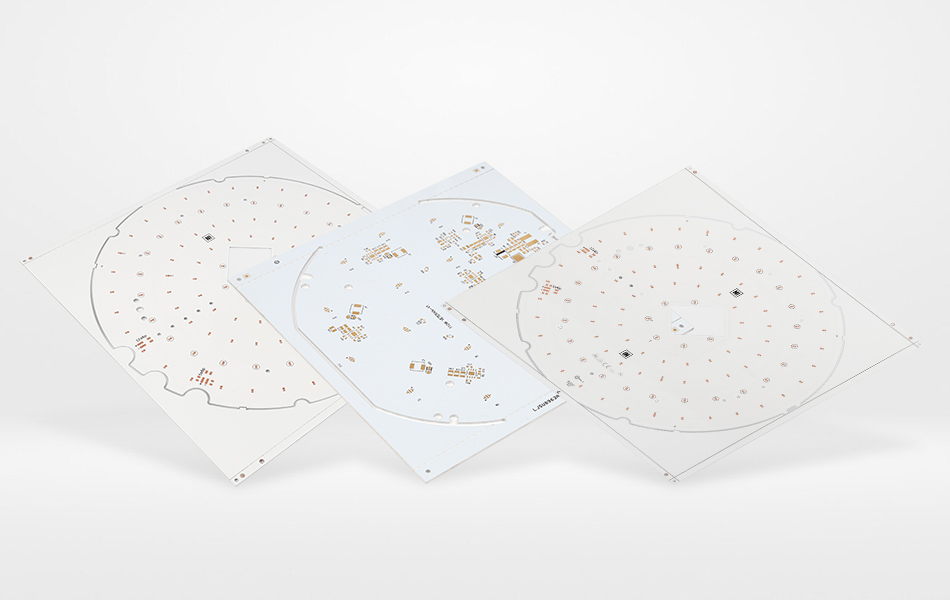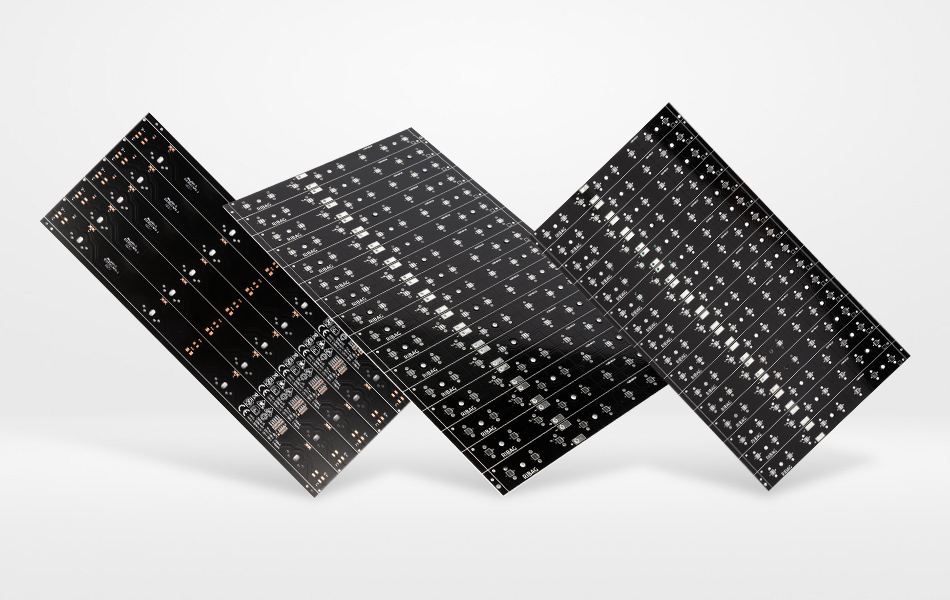-
- PCB TYPE
- PRINTED CIRCUIT BOARD PROTOTYPE ALUMINUM PRINTED CIRCUIT BOARD R&F PCB FPC HIGH FREQUENCY PCB HIGH-TG PCB HEAVY COPPER PCB HDI PCB PCB FOR LIGHTING METAL CORE PCB
time:Jun 24. 2025, 08:49:42
In the ever - changing landscape of electronics, the demand for more adaptable and innovative printed circuit board (PCB) solutions is on the rise. As electronic devices become increasingly compact, ergonomic, and versatile, traditional rigid PCBs often fall short in meeting the evolving design requirements. Bendable aluminum PCBs have emerged as a revolutionary alternative, combining the excellent thermal management capabilities of aluminum with the flexibility needed to create complex and space - optimized electronic designs. This article delves into the various aspects of bendable aluminum PCBs, including their structure, key advantages, design considerations, manufacturing processes, applications across industries, and market trends.
Structure of Bendable Aluminum PCBs
Layer Composition
Bendable aluminum PCBs feature a sophisticated multi - layer structure that is carefully engineered to balance flexibility, electrical functionality, and thermal performance. The aluminum substrate at the core offers enhanced malleability for bending while efficiently dissipating heat. A flexible dielectric layer provides insulation and enables bending, made from advanced polymers with additives. Copper traces on the outer layers, fabricated with special techniques, ensure electrical conductivity even when bent.
Material Selection
For the aluminum substrate, specific alloys are chosen based on flexibility, thermal conductivity, and strength, often undergoing heat treatment. The dielectric layer uses materials like polyimide, LCP, or fluoropolymers, customized with fillers or fibers. Copper traces utilize ultra - thin foils, alloys, or stretchable materials, along with surface treatments for better adhesion.

Advantages of Bendable Aluminum PCBs
Design Flexibility and Space Optimization
Bendable aluminum PCBs offer unparalleled design freedom, allowing for complex, 3D shapes. This is especially valuable in space - constrained applications like wearables, medical devices, and automotive interiors, enabling more compact and innovative designs.
Superior Heat Dissipation
Despite their flexibility, these PCBs maintain excellent thermal performance. The aluminum substrate efficiently manages heat from high - power components, ensuring reliability and extending device lifespan in power - intensive applications.
Enhanced Durability and Reliability
Combining flexible materials with a robust aluminum substrate, these PCBs can withstand repeated bending, vibration, and stress. They are ideal for applications with movement, reducing maintenance and replacement needs.
Lightweight and Compact Form Factor
Bendable aluminum PCBs are lighter and more compact than rigid PCBs. Their flexibility reduces unnecessary components, making them suitable for weight - sensitive applications like aerospace and enhancing portability in consumer devices.

Design Considerations for Bendable Aluminum PCBs
Mechanical Design
Determining the bend radius, managing stress, and using proper mounting techniques are crucial. The bend radius depends on materials and usage, while stress - relief features and careful component placement prevent fatigue. Specialized mounting methods accommodate the PCB's flexibility.
Thermal Design
Strategic component placement, optimized thermal vias, and suitable heat - sink integration are key. Components should be placed to maximize heat transfer, and thermal vias need to withstand bending. Flexible heat - sink materials balance heat dissipation and bendability.
Electrical Design
Trace routing must account for bending to maintain signal integrity. Impedance control, shielding, and proper grounding are essential for high - speed signals. Power and ground plane designs ensure stable power delivery and minimize EMI while withstanding mechanical stress.

Manufacturing Processes of Bendable Aluminum PCBs
Material Preparation
High - quality aluminum sheets, flexible dielectric materials, and copper foils are carefully selected and processed. Aluminum is treated for flexibility, dielectrics are formulated with additives, and copper undergoes surface treatments.
Lamination
Layers are bonded using heat, pressure, and sometimes adhesives. Precise control of parameters prevents defects and ensures a strong, flexible bond.
Drilling and Plating
Drilling creates holes with high precision to avoid damaging flexible layers. Electroplating ensures reliable electrical connections with uniform copper deposition.
Circuit Patterning
Photolithography is used for circuit patterning, with additional care in flexible PCBs to protect layers and ensure trace durability during bending.
Quality Control and Testing
Electrical, mechanical, and thermal tests verify performance. Tests include continuity, impedance, bend, and heat - dissipation testing to ensure high - quality products.

Applications of Bendable Aluminum PCBs
Wearable Electronics
Ideal for smartwatches, fitness trackers, and smart clothing, these PCBs conform to the body, ensuring comfort. Their heat - dissipation capabilities keep components running optimally, enhancing device performance and reliability.
6Medical Devices
Used in implantable devices and diagnostic equipment, bendable aluminum PCBs enable less invasive procedures due to their flexibility. They also ensure safe operation by effectively managing heat in sensitive medical components.
Automotive Electronics
Beneficial for in - car infotainment, ADAS, battery management, and lighting systems. These PCBs can endure the automotive environment's harsh conditions, contribute to space - saving designs, and improve vehicle electronics' overall performance and safety.
Aerospace and Defense
Suitable for aircraft avionics, satellite systems, UAVs, and military gear. Their lightweight and compact nature reduces equipment weight, and their ability to withstand extreme conditions makes them reliable in demanding aerospace and defense scenarios.
Consumer Electronics
In smartphones, tablets, and laptops, these PCBs optimize internal layouts, improve heat dissipation, and enable innovative form factors, making devices more powerful, compact, and user - friendly.

Market Dynamics of Bendable Aluminum PCBs
Market Growth
The market for bendable aluminum PCBs is expanding rapidly, driven by the growing demand for flexible and high - performance electronics across multiple sectors. In the wearable electronics industry, the increasing popularity of health - tracking devices and smart accessories fuels the adoption of these PCBs. The medical field's continuous innovation, with the development of more advanced implantable and portable diagnostic devices, also contributes significantly to market growth.
In the automotive sector, the rise of electric vehicles and the increasing integration of advanced driver - assistance systems (ADAS) and infotainment features create a higher demand for bendable aluminum PCBs. Similarly, the aerospace and defense industries, which require lightweight, reliable, and flexible electronic solutions for aircraft, satellites, and military equipment, are key drivers of market expansion. Additionally, the trend towards miniaturization and the need for efficient heat management in consumer electronics further propel the growth of this market.
Competitive Landscape
The market is highly competitive, with both established PCB manufacturers and new entrants vying for market share. Key players are constantly investing in research and development to enhance the performance of their bendable aluminum PCBs. They focus on developing new materials and manufacturing processes that can improve flexibility, thermal conductivity, and electrical performance while reducing production costs.
Differentiation strategies include offering customized solutions tailored to specific customer needs, providing excellent customer service, and ensuring high - quality products. Some companies are also collaborating with technology partners in different industries to gain a competitive edge and expand their market reach. As the market grows, competition is expected to intensify, leading to more innovation and better - priced products for consumers.
Challenges
One of the primary challenges is the high cost of materials and manufacturing processes. Specialized materials, such as advanced flexible polymers for the dielectric layer and specific aluminum alloys with enhanced bendability, come at a premium. The manufacturing process for bendable aluminum PCBs is complex and requires precise control, which increases production costs.
Another significant challenge is the lack of industry - wide standards. As the technology is relatively new, there is a lack of unified guidelines for design, testing, and quality control. This can lead to compatibility issues between different products and make it difficult for customers to compare offerings from various manufacturers.
Ensuring long - term reliability under repeated bending is also a technical challenge. The materials and manufacturing processes need to be carefully optimized to prevent fatigue and failure over time. Additionally, meeting the diverse and evolving requirements of different industries, each with its own set of performance, safety, and environmental standards, poses a significant hurdle for manufacturers.
Future Trends
In the future, the development of more advanced materials will be a key focus. Researchers are exploring new polymers, composites, and metal alloys that can offer even better flexibility, thermal conductivity, and mechanical strength. Integration with emerging technologies like the Internet of Things (IoT), 5G, and artificial intelligence (AI) will open up new application opportunities for bendable aluminum PCBs.
There will be a greater emphasis on miniaturization, with manufacturers aiming to create even more compact and lightweight PCBs without sacrificing performance. Additionally, sustainable manufacturing practices will gain more importance as the industry looks to reduce its environmental impact. This may involve using more recyclable materials, optimizing production processes to reduce waste, and improving energy efficiency in manufacturing facilities.
Conclusion
Bendable aluminum PCBs have transformed the electronics industry with their unique combination of flexibility, thermal management, and durability. While they face challenges in cost, standardization, and reliability, the growth opportunities are immense. As technology continues to evolve, these PCBs will play an increasingly crucial role in enabling the development of more innovative, efficient, and high - performing electronic devices across various sectors.

Got project ready to assembly? Contact us: info@apollopcb.com



We're not around but we still want to hear from you! Leave us a note:

Leave Message to APOLLOPCB
